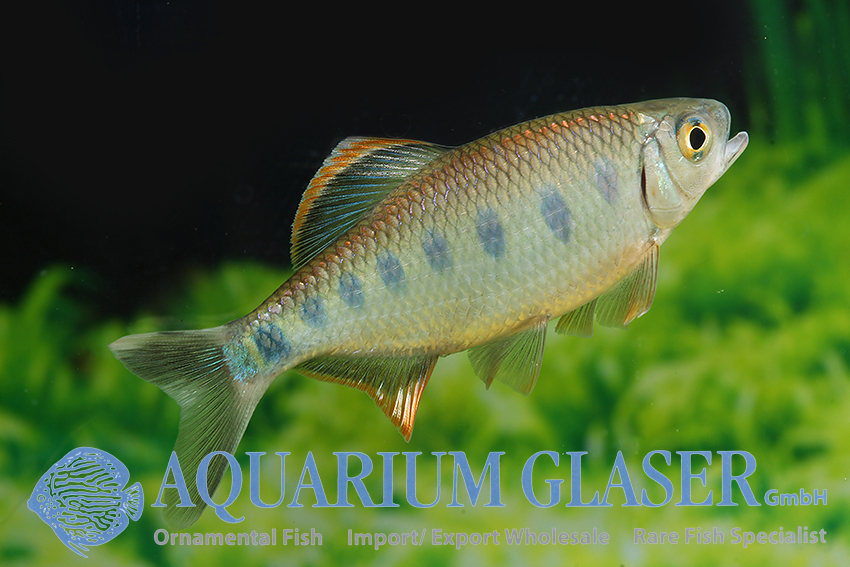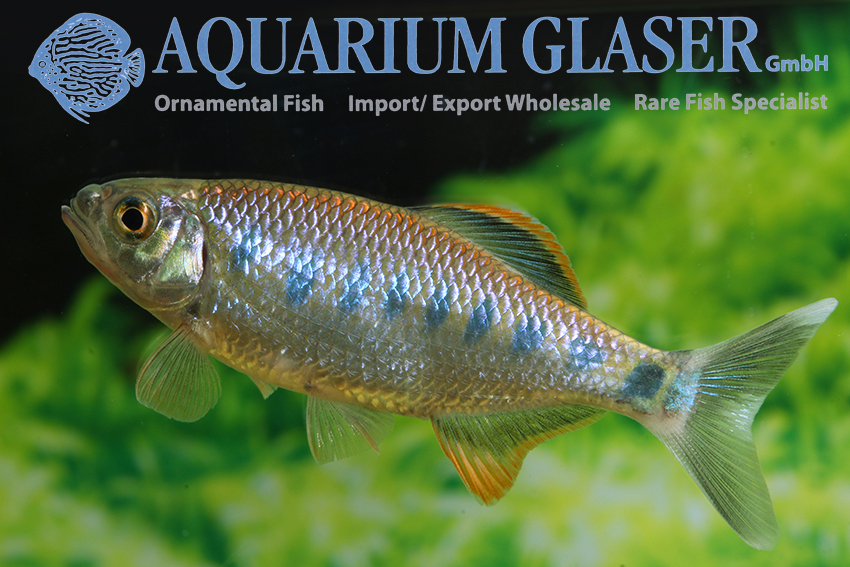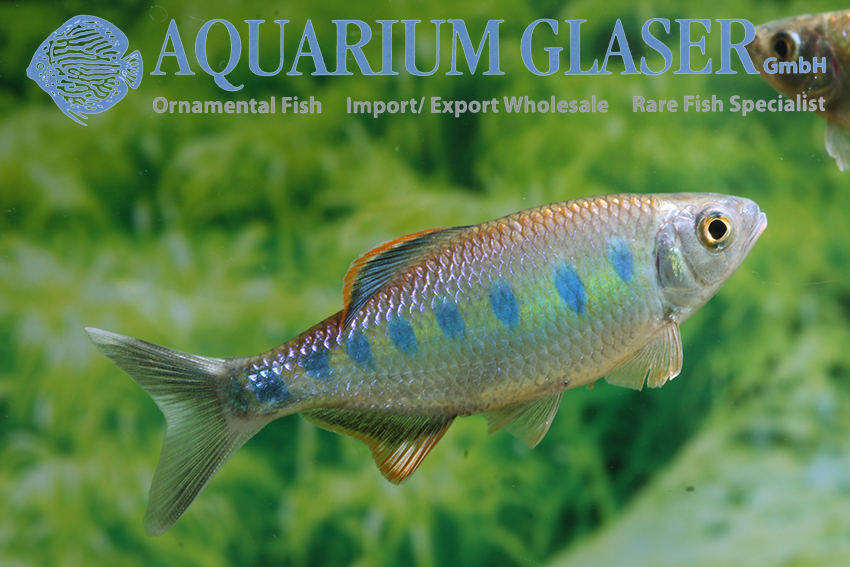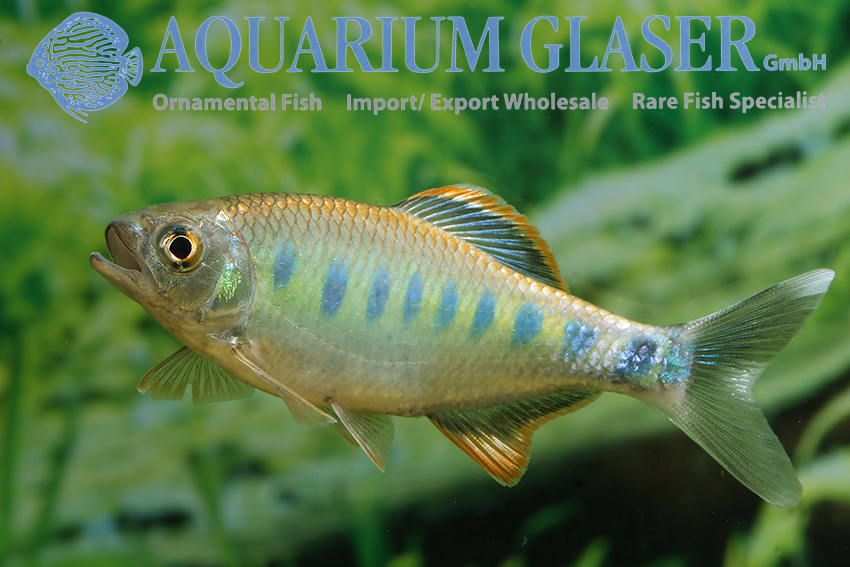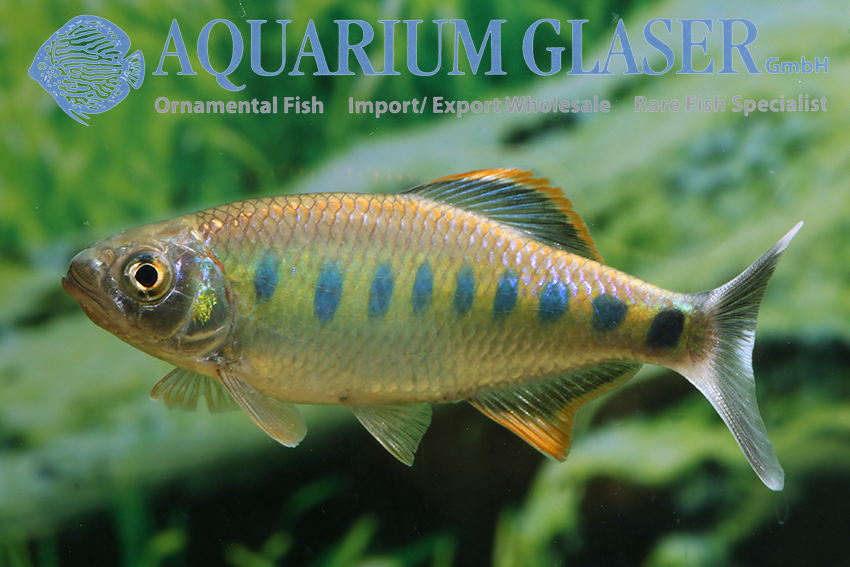Fishes of the genus Barilius are ecologically best compared to trout in the Indian region, where they do not naturally occur. Barilius thus prefer to live in clear waters with a gravelly bottom and some current. They are mostly seen in loose groups, they are not really schooling fish. They like to “play” among themselves, chasing each other over short distances, but without harming each other. They are small predators that prefer to eat insects that fall on the water surface, but also insect larvae living in the water, crustaceans or even small fish belong to the prey spectrum. The mouth gap of Barilius is comparatively large.
The coloration of Barilius is also comparable to that of young trout. Both have a number of dark vertical stripes on the flanks. There is a lack of striking colors, but Barilius are nevertheless often very colorful, especially yellow and blue colors iridesce on their bodies depending on the incidence of light.
Quite different from trout, however, is their reproductive behavior. While trout are migratory fish that move upstream to reproduce and dig pits in the ground where they spawn, Barilius, as far as this is known at all, dive into the ground and spawn in the gravel. However, it must be said at this point, the reproductive behavior of Barilius species is virtually unexplored.
One of the most beautiful Barilius species is B. ardens from the Indian state of Karnataka, which we can offer just once again. The magnificent fish grows (with caudal fin) about 12 cm long.
Very similar (and apparently sometimes mixed with B. ardens) is B. malabaricus, which differs from B. ardens by smaller flank spots and a differently colored caudal fin; in B. malabaricus the median caudal fin rays are not white.
For our customers: the animals have code 372842 (md) and 372843 (lg – xl) on our stocklist. Please note that we supply only wholesale.
Text & photos: Frank Schäfer





